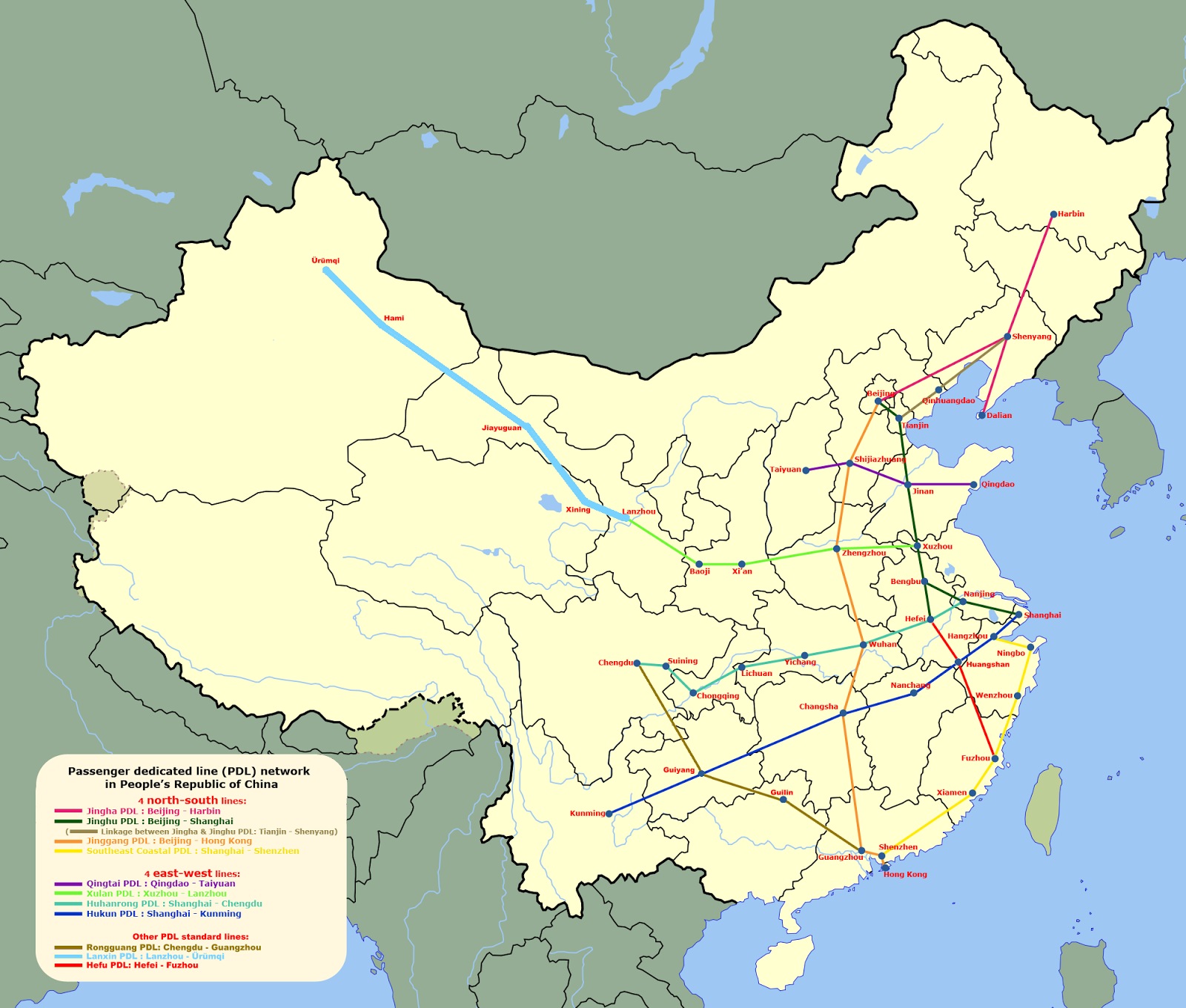China has opened a 330-mile stretch of high speed rail between Xinjiang’s capital, Urumqi, and Hami, a city in eastern Xinjiang, is the first stage of the 1100-mile Lanxin Railway, which will connect Urumqi to Lanzhou, the capital of the northwestern province of Gansu. The full length of the passenger railway was on schedule to open by the end of the year. Trains on the Urumqi-Hami leg could reach more than 120 miles per hour, more than halving the travel time between the two cities to three hours.
Over the past year, President Xi Jinping has spelled out ambitious plans to open western China and to build a “New Silk Road” network of intercontinental land routes and maritime lines that would connect China to its Central and Southeast Asian neighbors. Mr. Xi announced a $40 billion fund to invest in infrastructure projects just this month.
China has also been pouring money into Xinjiang’s development in an effort to quell growing discontent among the Uighurs.
Over half of the sum, or 4 trillion rubles ($ 87.5 billion), is expected to come from Chinese investors, said Alexander Misharin, who heads Russian Railways’ subsidiary High-Speed Rail Lines, news agency TASS reported.
Russia and China signed a memorandum of cooperation on the development of a high-speed rail network in mid October that included construction of a high-speed rail line from Moscow to Beijing.
Trains are expected to hurtle along the new line at an average speed of 400 kilometers per hour, cutting the travel time between the two cities from the current 6 or more days to about 33 hours.
The high speed rail from Beijing to Moscow and new high speed rail for the new silk roads could get completed around 2025.
A high speed link between Moscow and Kazan, almost 800 kilometers to the east, is intended as the first section of the continent-spanning new railroad. But it is not clear who will foot the 1 trillion rubles ($ 21 billion) bill for the project.
The Moscow and Kazan link, the capital of the Tatarstan region, was delayed by at least a year after the government balked at providing 20 billion rubles needed to start design and surveying work. Russian Railways now plans to start work as early as next year and complete construction in 2019.
Russia’s government may contribute 670 billion rubles for the Kazan link, including money from the federal budget, borrowing from the National Wellbeing Fund and the sale of infrastructure bonds to the state pension fund, Misharin said. The government will make a decision on cash from the Wellbeing Fund after analyzing the project, which was declared strategically important in May, the Economy Ministry said in an e-mailed response to questions.
Chinese investors might provide some of the remaining $10 billion investment.
The link to Beijing would take eight to 10 years at most to build, after financing is decided, Misharin said

Brian Wang is a Futurist Thought Leader and a popular Science blogger with 1 million readers per month. His blog Nextbigfuture.com is ranked #1 Science News Blog. It covers many disruptive technology and trends including Space, Robotics, Artificial Intelligence, Medicine, Anti-aging Biotechnology, and Nanotechnology.
Known for identifying cutting edge technologies, he is currently a Co-Founder of a startup and fundraiser for high potential early-stage companies. He is the Head of Research for Allocations for deep technology investments and an Angel Investor at Space Angels.
A frequent speaker at corporations, he has been a TEDx speaker, a Singularity University speaker and guest at numerous interviews for radio and podcasts. He is open to public speaking and advising engagements.



